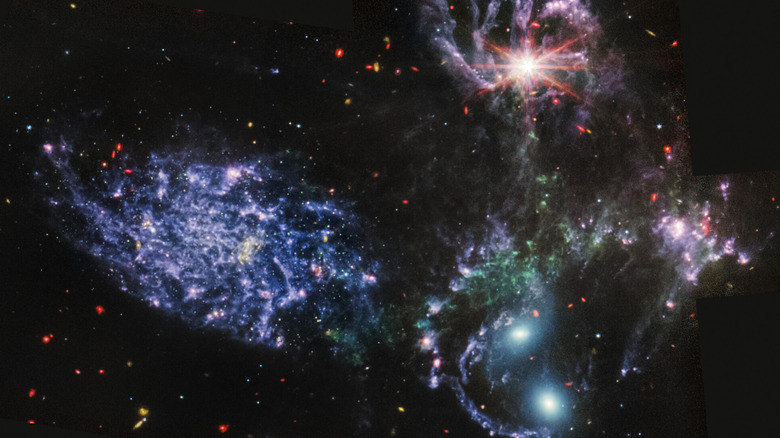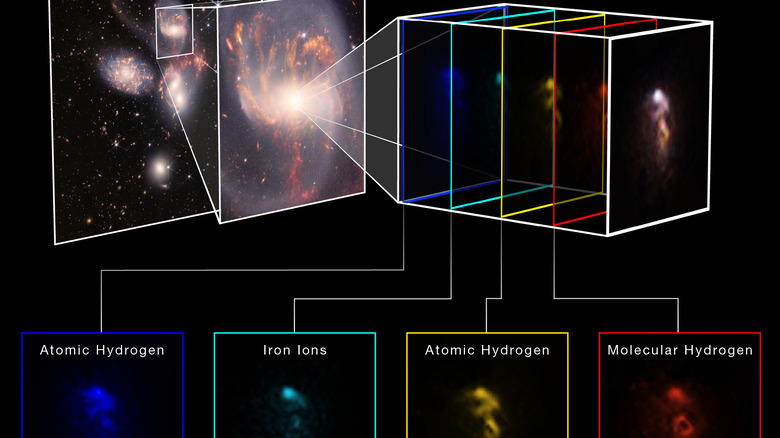There's A Supermassive Black Hole Hiding In This James Webb Image
Among the images released in the first batch of scientific data from the James Webb Space Telescope was a striking image of a galactic dance. The five galaxies of Stephan's Quintet appear in one frame, with one galaxy alone near the bottom of the frame while the other four are linked together in the chaotic but beautiful process of merging. That's because the single galaxy is actually much closer to us than the others at 40 million light-years away compared to the others, which are all 290 million light-years away, but because the galaxies are in the same direction from Earth they appear to be a group (via Webb Space Telescope).
The presented image was made by combining data from two instruments — NIRCam and MIRI — in a way that shows both the galaxies shining brightly and the regions of dust and gas where new stars are being born. If you peel back the layers of this image, though, there's a surprise hiding within it.
The galaxy at the top of the group called NGC 7319 is host to an active galactic nucleus, meaning a very bright and busy area at the center of a galaxy. At the heart of this galaxy is a supermassive black hole gradually chomping its way through material that falls past its event horizon, indirectly giving off light, and the material around it bumps together and gets hot. This monster black hole has a mass 24 million times that of our sun (via Webb Space Telescope).
Studying a monster black hole
Almost all galaxies have these supermassive black holes at their center, but like other types of black holes, they can't be observed directly. However, when looking at Stephan's Quintet, the Webb scientists were able to study this black hole by looking at the gas around it. As gas moves around the supermassive black hole, it gets hot, and scientists were able to study it using Webb's spectrography instruments. These work by taking the light from an object and breaking it down into different wavelengths. By seeing which wavelengths of light have been absorbed, scientists can work out what an object is made of.
In this case, they could see several key components in the gas around the black hole using Webb's NIRSpec instrument: atomic hydrogen, which they could trace to see the structure of the gas moving away from the black hole, iron ions which point to the areas with the hottest gas, and molecular hydrogen, which is cold and dense and fuels the black hole.
The researchers also used a spectrometer in the mid-infrared instrument, MIDI, to see how the gas around the black hole was being ionized by radiation from it, tracking the movement of gas both toward and away from the celestial body. "By using NIRSpec, scientists have gained unprecedented information about the black hole and its outflow," Webb scientists write. "Studying these relatively nearby galaxies helps scientists better understand galaxy evolution in the much more distant universe."

